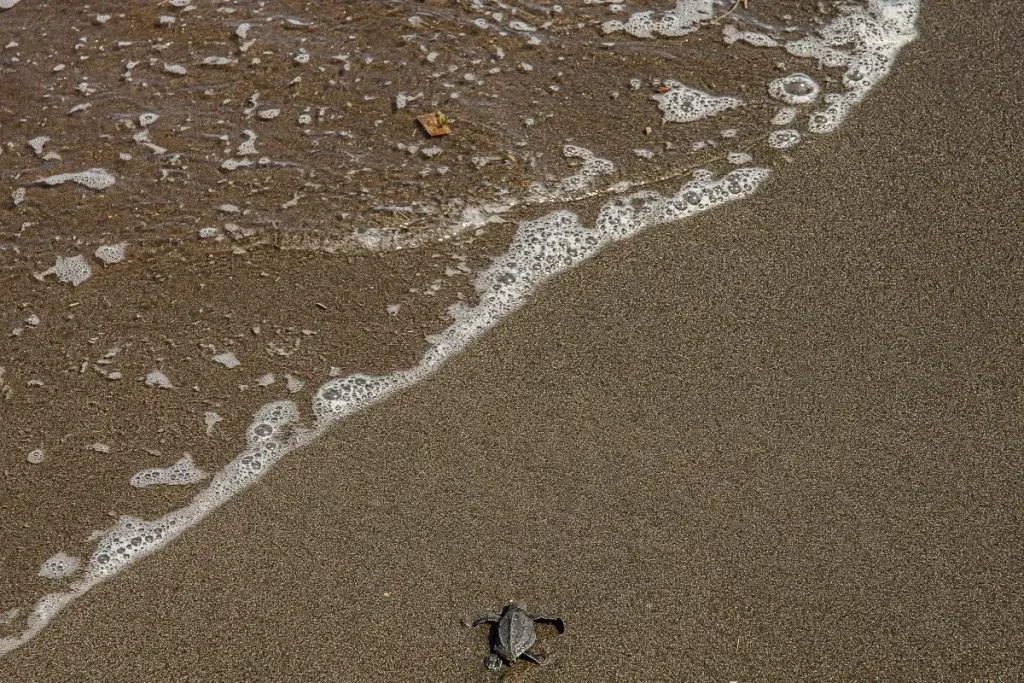A massive emergence of Kemp’s ridley sea turtle hatchlings occurred this week at the Isla Cañas Wildlife Refuge in Panama’s Los Santos province. The event saw 3,878 newborn turtles successfully reach the Pacific Ocean under the watchful protection of environmental authorities. This coordinated effort highlights a significant conservation victory for one of the world’s most endangered sea turtle species.
The technical team for the protected area, led by refuge chief Rogelio Cedeño, supervised the hatching from 53 nests that had been incubated in an artificial nursery. The team meticulously monitored the conditions to ensure a successful emergence. Park rangers and police units worked through the early morning hours to safeguard the turtles’ critical journey from nest to sea.
“The dawn in Isla Cañas brought a spectacle that is rarely repeated with such intensity,” said Rogelio Cedeño, head of the refuge. [Translated from Spanish] He described the scene of thousands of tiny hatchlings emerging from the damp sand and advancing, with slow but determined steps, toward the Pacific Ocean.
This single event represents just a fraction of the ongoing nesting activity. Cedeño further reported that the refuge’s natural nursery, which extends along several kilometers of beach, anticipates the hatching of roughly 600 additional nests. This could equate to approximately 51,000 more Kemp’s ridley sea turtle hatchlings in the coming days.

A Coordinated Conservation Success
Personnel from multiple agencies collaborated to make the event successful. Park rangers Manuel De Gracia, Moises Barría, Dimas Gutiérrez, Katherine Marín, and Domingo Zarzavilla were all present. They worked alongside units from the Environmental, Rural, and Tourist Police. The police presence was led by Sergeant II Luis Córdoba, Corporal I Eric Urriola, Lieutenant Javier Sánchez, and Officer Kevin Espinoza.
Their joint mission focused on protecting the nests and ensuring the hatchlings made their trek to the water safely. This guaranteed the young turtles could begin their life cycle under secure conditions. The collaborative work reinforces a commitment to preserving this emblematic species of the Panamanian Pacific. Conservationists hope the turtles will return to nest at the same wildlife refuge that witnessed their birth once they reach adulthood.
These results firmly establish Isla Cañas as a primary nesting sanctuary for the species in the region. They also demonstrate the positive impact of joint work between park rangers, security forces, local communities, and institutional allies. The success story provides a powerful example of effective wildlife management.
Ongoing Protection for Panama’s Marine Biodiversity
The Ministry of Environment (MiAmbiente) continues permanent monitoring, conservation, and environmental education actions through the National System of Protected Areas of Panama and the Los Santos Regional Directorate. These efforts strengthen the protection of marine and coastal biodiversity. They also foster environmental awareness within neighboring communities, which is crucial for long-term success.
Panama has been strengthening its environmental policies, including new regulations for its areas protegidas. The country’s commitment to conservation is evident in these large-scale hatching events. Protecting key species like the Kemp’s ridley sea turtle is a central pillar of this national strategy. Each successful hatching season contributes to the gradual recovery of the population.
The Isla Cañas Wildlife Refuge remains a critical haven for sea turtles. The dedication of its staff and partners ensures these ancient mariners have a fighting chance. Their work safeguards a natural wonder for future generations to witness and appreciate.



